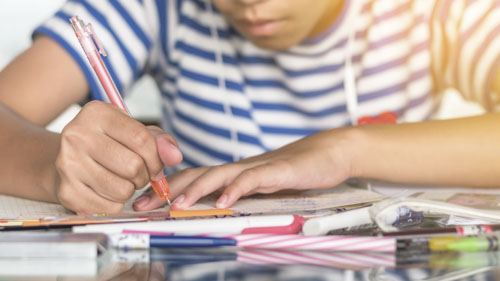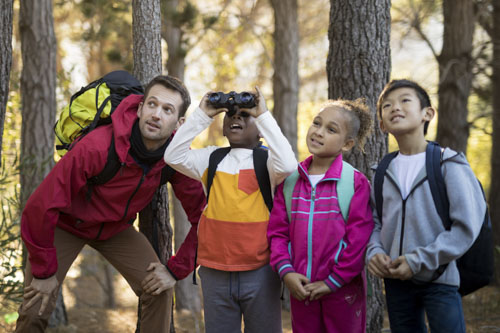Written by Amélie Chiasson
Do you remember why you became a second language teacher? What motivated you to learn a second or third language? Whatever the reason, something motivated you to be the bilingual or multilingual person you are now. Our second language learners are no exception. However, with simultaneous translation apps, some people no longer see the value of investing time and effort in learning a foreign language. How then can we motivate them to want to learn and become functional in the target language? How do we get them to be active learners in our classes?
Many of us use the communicative approach in the classroom, which is flexible and gives a lot of freedom to the teacher. According to Germain, learners of the target language develop their language skills through authentic and stimulating interactions. Whew! This is a big responsibility that can weigh heavily on our shoulders. Here are some ideas that will motivate your students and that might inspire you to explore new paths in your teaching.
Stimulating Their Creativity
In the age of artificial intelligence, it can be scary to think that we may one day be replaced by robots and machines. But fear not! Machines will never be able to match the creativity, imagination, and critical thinking skills of humans. That’s why, as second language teachers, we need to create rich and challenging environments for our students. We need to provide opportunities for everyone to get involved, where human relationships have a powerful impact and thinking outside the box is valued. Let’s design original, rich, challenging, and innovative educational programs that will make language class our students’ favourite class.

Thinking Outside the Box
Some of our students don’t have the opportunity to be challenged at home; so, when it comes time to write or express themselves on certain topics, they are stuck by their lack of experience or vocabulary. No matter how often we provide them with conversation opportunities, whether through “computer-mediated communication” (CMC) or directly with their peers, they won’t come up with new ideas to create authentic exchanges. It’s up to us to help them experience memorable and varied moments. And making something memorable means creating emotional connections!
According to researcher Alexandra Reynolds, positive emotions play a key role in learning and success. If we look back at our formative years, it’s easy to see links between second language learning and the community language learning method created by Charles Curran in the 1960s. This method advocates taking into account “the emotional and affective aspects and the whole personality of the individual.” We need to be aware of our students’ reactions and emotions and be open to their ideas.
As If We Were There
Let’s think of our language classes as learning communities. We are all learners who have positive experiences that nourish and motivate us. So, when you’re in “educational planning” mode, explore situations that excite you. Do you like to travel? Use Google Expeditions. Your students can visit cities, public parks, or tourist areas as if they were there. You can even take guided tours of national parks. Now it’s up to you to spark discussions, bring emotions to life, and create situations that will allow them to continue their discoveries.
Going Outside
Some students haven’t been exposed to the benefits of nature. Go play outside with them; explore parks near the school. What a great way to work on vocabulary! Let them touch, smell, listen, and lie on the ground to watch the clouds. They can take a picture of something in nature that calls out to them and record their impressions, ideas, observations, etc. verbally. In the spirit of planning, make sure your safety instructions are clear before going out and be accompanied by another adult.

Using the Arts
The arts can provide great opportunities for discussion and learning. Whether it’s reading a novel or children’s books, listening to music, or going on a virtual museum visit, there are many reasons to introduce our students to art. Do you think your students are too old for reading aloud? Think again, because for them, this is a small hidden pleasure that allows them to get to know new authors. Don’t hesitate to give them the space to express themselves and discuss a work.
Here are some resources to explore:
- Storyweaver (digital books in many languages)
- Radio-Canada Ohdio (French-language audiobooks)
- The National Film Board of Canada (NFB)
- L’Espace Livrovore (French books, reading and writing activities, games, and more)
- The National Gallery of Canada
- Récit (French activities, resources, games, and more)
- The Museums of Quebec: Virtual Visits and Experiences
Playing Together
By nature, learning a second language takes place through interactions with others. It’s therefore important to offer as many situations that require interaction, and in which students have fun together, as possible. What’s better than playing board games? Get out your Monopoly sets, playing cards, Jenga blocks, and educational games. Students will discover that it’s possible to learn while having fun.
The Results
By nurturing our students’ creativity, imaginations, and critical thinking skills, we allow them to combine all this learning with rich vocabulary, unique ideas, and transformative experiences. The goal is to create environments that are so stimulating and inspiring that our students won’t want to leave our language class and will want to invest in becoming functional in the target language.




